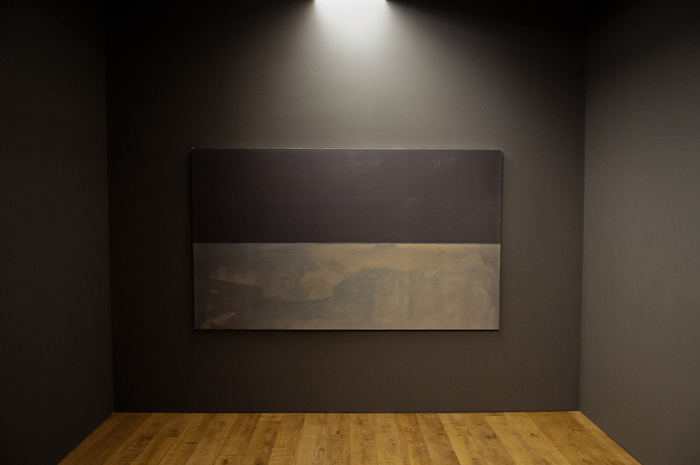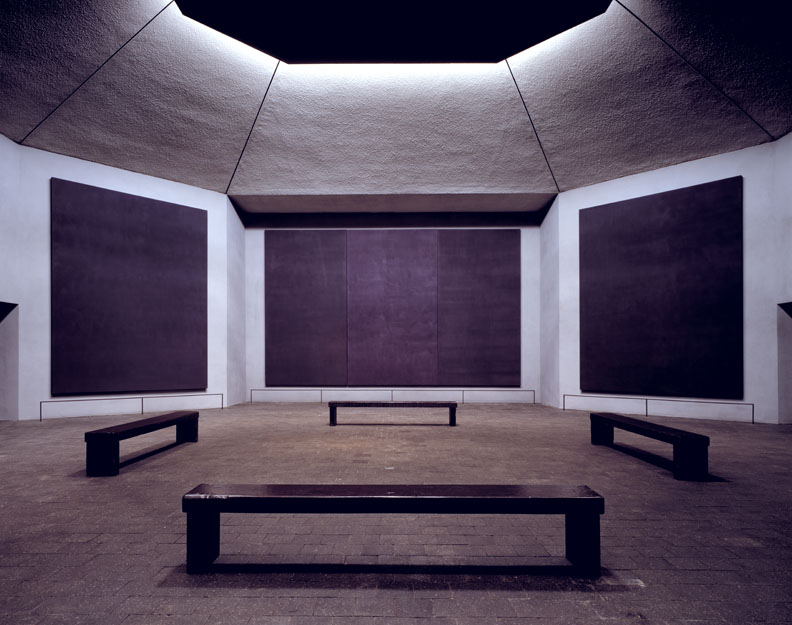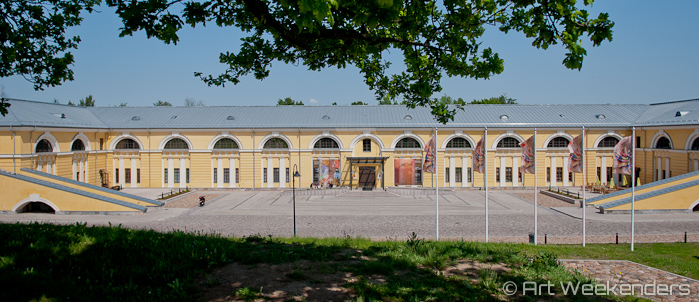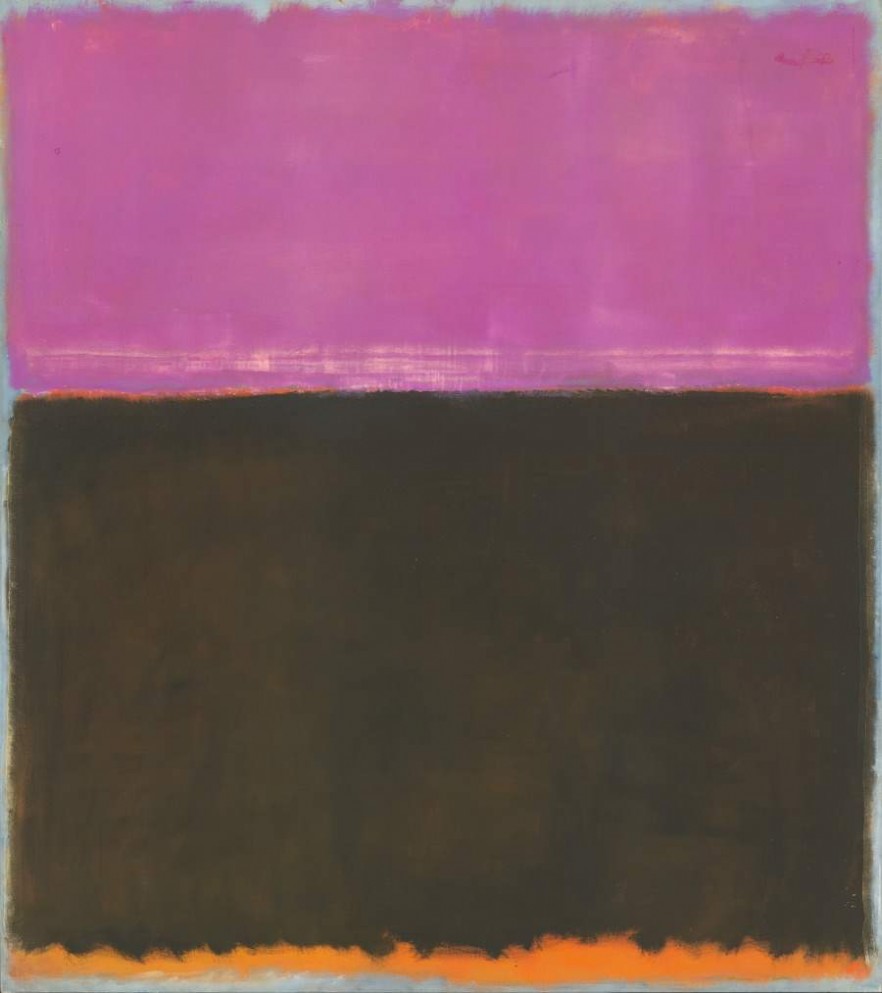Rothko’s Colours – His Spiritual Performers
Each month there is an opportunity to discover a new topic or new events via the ArtSmart Roundtable, a series of articles by a group of art interested travel bloggers. This month the theme is ‘colour’ and our theme will cover Mark Rothko’s colours explaining his career, especially with his newly opened exhibition at the Gemeentemuseum in The Hague, the Netherlands, in mind. Don’t forget to check out the other contributions for this month, good stories offering something fun to discover – listed at the bottom of the article.
One day at the height of his career, Mark Rothko got asked how long it took him to paint one of his paintings. His answer was short and, quite characteristically for him, sardonic: “I’m 57 years old and it took me all my life to do it.” Quite some time for an artist famous for having most of his works painted in just one, at its maximum a combination of two, maybe three colours. And yet, his works, which seem to be grown out of simplicity, are very tellingly involving a complexity worth a lifetime of contemplations.
Mark Rothko (1903-1970), Untitled, 1953, National Gallery of Art, Washington © 1998 Kate Rothko Prizel & Christopher RothkoTo recite Wim Pijbes, the director of Amsterdam’s Rijksmuseum, Rothko’s paintings are intense: “they’re profound and somehow all about that intensity of the colour that you end up staring at while it vibrates in front of your eyes”. As the onlooker of Mark Rothko’s works you end up gazing, scrutinizing, intricately trying to decipher his paintings, but despite your best efforts to understand what they are about you just can’t really grasp it. It feels simple, but it’s a trap: the intense colours you stare at are not giving away anything – and maybe they’re not meant to either. Mark Rothko saw his art as a spiritual process and, in fact, as one of the only artists in the contemporary art world, he openly proclaimed his art to have a spiritual meaning – especially a bold statement in a time when abstract art in general was still considered fairly impersonal, in some people’s eyes even cold.
If we would draw further on the spiritual parallels in Rothko’s art, it would be a natural step to extend on the spiritual tie. The artist himself considered his colours as his performers, and with a stretch of the imagination it could be said that the colours are in fact taking the place of, let’s say, the high priest, the cleric, or of the shaman if you so please. Is it an exaggeration? Maybe not. If you see his work with your own eyes, in the right setting, the experience will feel very special.

One colour only: Untitled, 1970, acryllic on canvas Mark Rothko
One of our best art moments this year was our visit to the Mark Rothko Center in Daugavpils in Latvia. Experiencing some of his work in the splendid setting his native town offers was a treat both for the eyes and the mind and it was a moment when the price tag for his works felt, almost, justified. Rothko is today one of the most celebrated artists in the world – a faith that didn’t look so likely when the artist struggled in the New York of the 1950’s – and the price for his paintings are steady record breakers. Given the meditative aspect of his works it’s no big surprise that his popularity got especially pivotal in the Far East and many of his highest paying works have been purchased by Asian collectors.

Silent room in the Mark Rothko Centre in Daugavpils, Latvia.
Mark Rothko is in many ways a cultural bridge-maker, spiritually and geographically alike. Coming from Jewish but a religious background of Russian-Latvian origins, Rothko evolved into one of the most important American artists in the post-war era and his popularity only skyrocketed after his premature death. While not directly having eastern mysticism in mind, as far as we know, Rothko’s voice through his art feels almost more adjusted for the oriental world than the more hectic America. Just reflecting over his beloved colour performers, the thought quickly takes us to eastern philosophies. Was it intentional? It’s one of the many mysteries for us to reflect upon while being absorbed by his works.
Rothko back in the Netherlands
We, based here in Amsterdam, are right now in the fall of 2014 lucky enough to have one of the latest large-scale Rothko exhibitions just a short train ride away. After 40 years of absence from the Dutch shores, the works of Mark Rothko are back in the Netherlands, at the Gemeentemuseum of The Hague. Our Dutch base being the home of many other of the greatest modernists – shall we just mention Mondrian quickly? – it will certainly be a treat to have the opportunity to compare the two styles, a treat we can’t wait to be part of.

Rothko next to Mondrian – A first in history. At the Gemeentemuseum The Hague, Fall 2014. © Gemeentemuseum Den Haag
As often happens, the reviews we’ve read have been mixed, which as we see it only gives an extra inspiration for the experience. Rothko is unlike anyone else and his oeuvre touches everyone differently. The extra benefit to have the other great of his time, Mondrian, just a few rooms away adds an extra bonus, it feels like a sort of artistic face-off, a contrast of American and European abstract art, as many like to put it. Or maybe a great complimentary show?
The exhibition at the Gemeentemuseum Den Haag is on until 1 March 2015, an opportunity not to miss if you are in the Netherlands.
Where to see Rothko’s Colours around the world
Mark Rothko’s colours through his works can be seen all around the world, many of the places offering a sort of art-related pilgrimage, places especially carved out for the personal Rothko-connection.
The Rothko Chapel in HOUSTON
The place in every sense symbolizing Rothko’s mystical approach to his art is the Rothko Chapel in Houston, Texas. The Rothko Chapel is especially built and designed for the “religious” aspect that Rothko gave to his paintings and the whole place is built around his spiritual ideas about his art. Rothko indeed spent six years of his life making the place ready. It is meant to be a spiritual experience, where Roman-Catholic symbolism is at the core of the matter. Rothko himself never saw the completed “chapel” including the 14 artworks he made especially for it, he committed suicide shortly before the opening. But you can admire his legacy here in this most special setting – supposedly a rare transcending one, to use Rothko’s own fascination with the term –, a unique art experience in the world.

The Pace Gallery in New York
The family collection of Mark Rothko works owned by the Mark Rothko Estate has been represented by the Pace Gallery in New York since 1978.
Mark Rothko at the MoMa in New York
The New York’s Museum of Modern Art is in the possession of one of the biggest collections of Rothko’s in the world. These works are always in high demand and it’s almost unthinkable to find all of them here at the same time. But do not worry, there will be enough of them to grab your full attention.

Rothko at the National Gallery in Washington, DC
One of the best collections of Rothko’s oeuvre can be found in the National Gallery of Washington, DC. In fact, many of the works visiting the Dutch exhibition in The Hague now in 2014 and early 2015 are works lent by the National Gallery. Among the highest rated works that can be seen in Washington, DC, are the famous and controversial Seagram murals, the sketches for it and some finished works. The 1959 project, originally planned for the Four Seasons restaurant in the Seagram Building in New York City, was cancelled by the artist when he didn’t find the setting proper for his work, a withdrawal with big financial consequences for the artist.

Not only fields of colours: Mark Rothko, Untitled (man and two women in a pastoral setting), 1940. National Gallery Washington
The Mark Rothko center in Daugavpils, Latvia
As already highlighted above, one of the new great additions to the contemporary art world is the newly inaugurated Rothko Center in the artist’s place of birth, Daugavpils (Dvinsk, if you so like, as the city was called in the time of the Russian empire when the artist was born in 1903). This is a place that is not likely to be just a train-ride away from where you are, but based on our first-hand experience we’d like to say that it’s a destination worth making the pilgrimage for. We think the potential for the place is fantastic, it’s a museum experience with a very special touch.

The Mark Rothko Centre in Daugavpils, Latvia.
Besides Rothko’s colours, the other “Colour” contributions for this month’s Art Smart Roundtable are:
- Jenna of This Is My Happiness – Color and Art Exhibitions 2014-2015
- Christina of Daydream Tourist – Caesar and the Snail: “Royal Purple” in Imperial Rome
